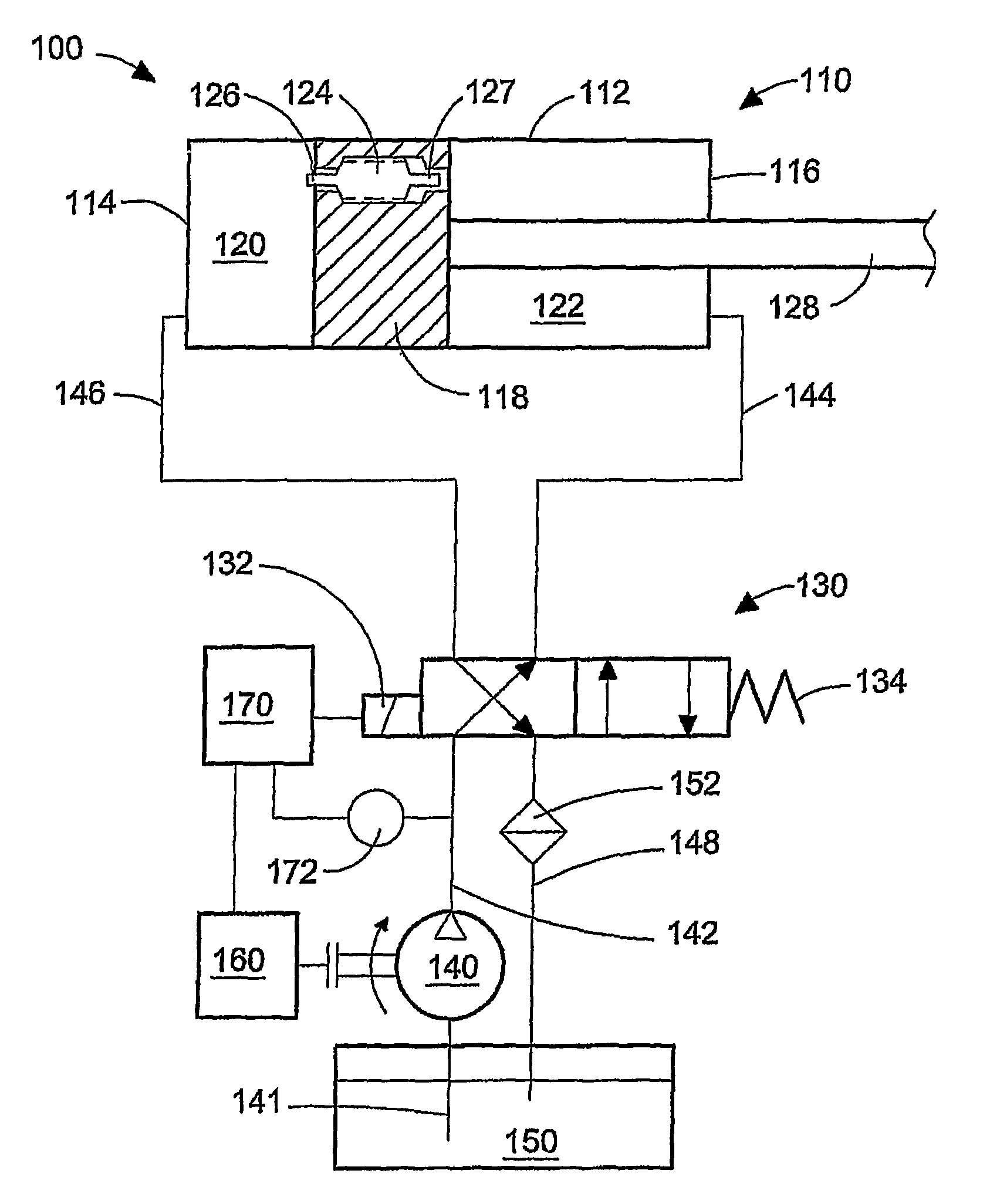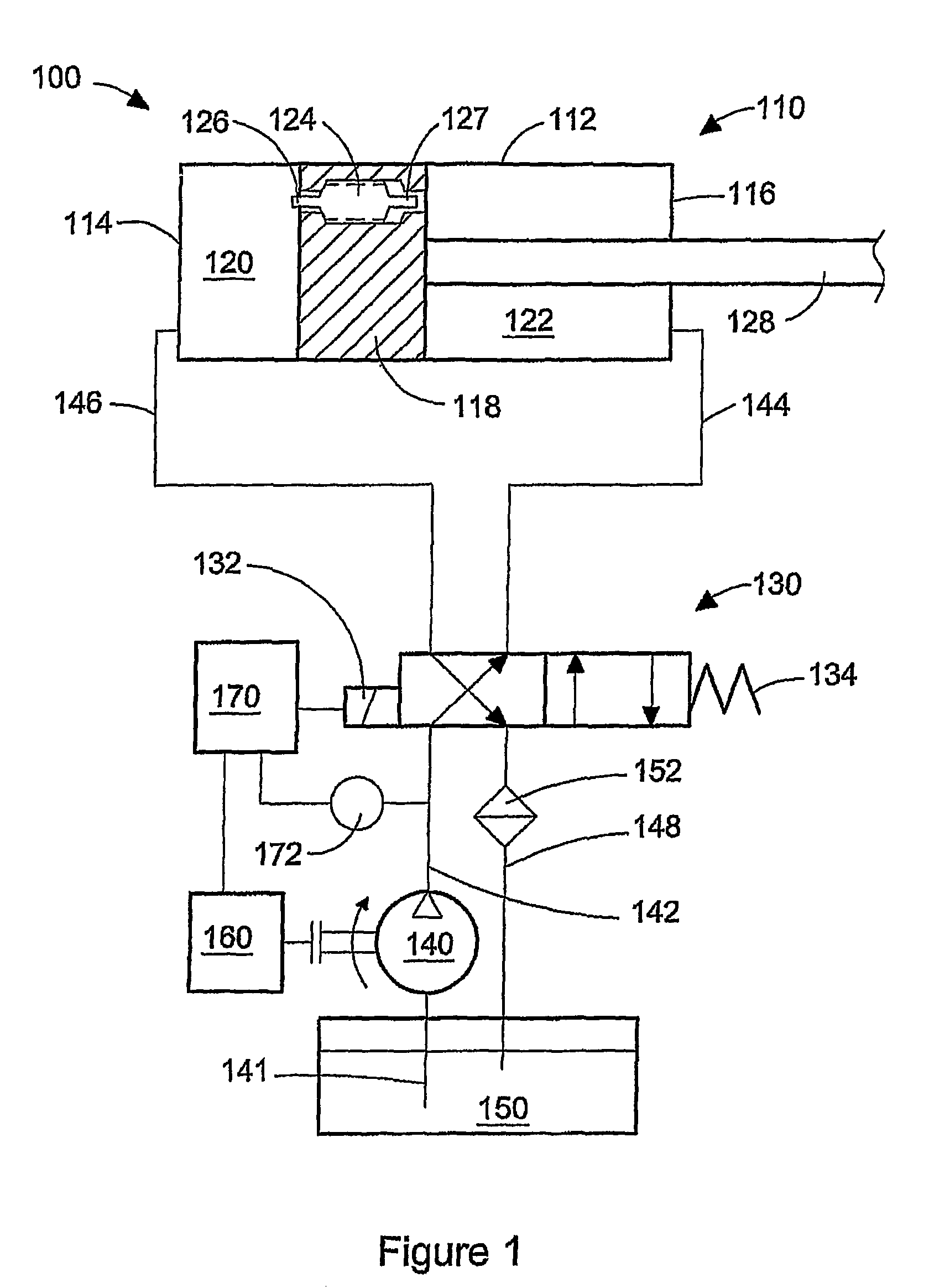Hydraulic drive system and method of operating a hydraulic drive system
a hydraulic drive and hydraulic drive technology, applied in the direction of fluid couplings, piston pumps, servomotors, etc., can solve the problems of difficult timing adjustment, affecting the speed of the piston, and adding to the cost of the system, so as to reduce the amount of energy wasted, prevent over-pressurization of the system, and increase the delay
- Summary
- Abstract
- Description
- Claims
- Application Information
AI Technical Summary
Benefits of technology
Problems solved by technology
Method used
Image
Examples
Embodiment Construction
)
[0067]In the figures described herein, like reference numbers are employed to identify like features, and to be concise, if features described with respect to one figure are shown again and identified by the same reference number in another figure, the description of such features may not be repeated.
[0068]FIG. 1 is a schematic view of hydraulic drive system 100, which is operable to provide linear actuation to a machine (not shown). As noted above, there are many applications for hydraulic drive system 100, which has as its major components, hydraulic piston actuator 110, flow switching device 130, hydraulic pump 140, hydraulic fluid reservoir 150, motor 160, and electronic controller 170.
[0069]Hydraulic actuator 110 comprises hydraulic cylinder 112, which is sealed at each end by respective cylinder heads 114 and 116. Piston 118 is reciprocable within cylinder 112 and divides the interior of cylinder 112 into first hydraulic fluid chamber 120 and second hydraulic fluid chamber 12...
PUM
 Login to View More
Login to View More Abstract
Description
Claims
Application Information
 Login to View More
Login to View More - R&D
- Intellectual Property
- Life Sciences
- Materials
- Tech Scout
- Unparalleled Data Quality
- Higher Quality Content
- 60% Fewer Hallucinations
Browse by: Latest US Patents, China's latest patents, Technical Efficacy Thesaurus, Application Domain, Technology Topic, Popular Technical Reports.
© 2025 PatSnap. All rights reserved.Legal|Privacy policy|Modern Slavery Act Transparency Statement|Sitemap|About US| Contact US: help@patsnap.com



